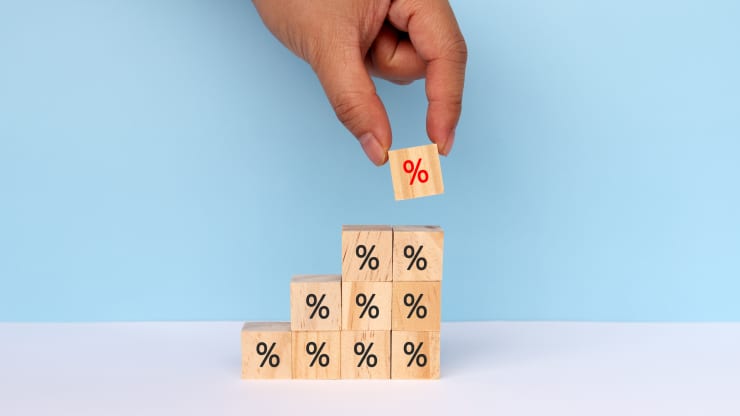Interest rates were raised by the Fed for the fourth time this year to help combat high inflation.

On Wednesday, the Federal Reserve announced a new hike of interest rates for the fourth time this year, this time at 75 basis points (0.75%).
The recent interest rate hikes have been part of the central bank’s primary effort to quell record-high inflation without sending the broader economy into a recession tailspin.
While the rising costs of everyday items have sent many Americans tapping into their savings, the interest rate hikes also give consumers a larger incentive to keep their money in a savings account.
Higher interest rates will likely result in a higher APY
When the Federal Reserve raises or lowers interest rates, it affects the entire financial ecosystem. APRs and APYs on products such as student loans, credit cards, mortgages and bank accounts can all fluctuate when these kinds of interest rate changes are made.
As the Federal Reserve raises interest rates, consumer banks will typically follow suit soon after, raising their APRs on loans and APYs on bank accounts, including high-yield savings accounts. APR (annual percentage rate) applies to interest accruing on a debt, while APY (annual percentage yield) includes compound interest paid to investors and borrowers.
The higher the APYs go on your savings account, the more you’ll end up making on your idle cash. This can provide a great opportunity to make easy returns on what you already have socked away for a rainy day.
If you have an emergency fund saved up within a traditional savings account, you’re likely receiving some sort of interest from the bank — but not much. If, on the other hand, you consider using a high-yield savings account instead, you could be earning even more interest as a result of the Fed raising rates.
High-yield savings accounts such as Marcus by Goldman Sachs High Yield Online Savings offer interest on your balances simply by keeping your money in the account. As of this writing, this type of account awards a 1.20% APY with no monthly fees and no minimum deposits. It’s possible that will increase in the near-future as the rate hikes go into effect.
Goldman Sachs isn’t the only provider that offers above-average returns. Here’s a look at some other top high-yield savings account options from Discover, Ally Bank and Sallie Mae.
Bottom line
Inflation is hitting American wallets hard as nearly half of the U.S. population falls into debt. As a result, the Federal Reserve is doing its part by making borrowing money more expensive in order to try and slow down the economy for a while.
While hiking interest rates can make mortgages, auto loans and other types of loans even pricier, you can also take advantage of the rising rates to earn more on your high-yield savings account balance. That said, if you are dealing with debt that has 5% interest rate or greater, you really should prioritize paying that down before using the extra money to bolster your emergency fund or save for the future.
